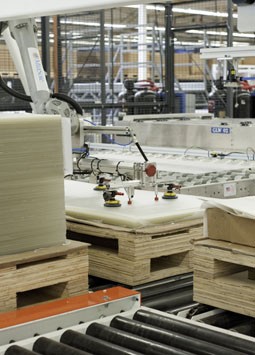MiaSole announces efficiency gains with thin-film PV
 The National Renewable Energy Laboratory (NREL) certified a thin-film MiaSolé photovoltaic (PV) panel at15.7 percent, the most efficient copper indium gallium selenide (CIGS) panel the lab has tested.
The National Renewable Energy Laboratory (NREL) certified a thin-film MiaSolé photovoltaic (PV) panel at15.7 percent, the most efficient copper indium gallium selenide (CIGS) panel the lab has tested.
It’s an important step as CIGS manufacturers strive to close the efficiency gap with the more expensive crystalline silicon PV, which has traditionally been more efficient.
While NREL has tested a CIGS PV cell that reached about 20 percent efficiency, that cell was specially developed in the lab and was only a square centimeter in size.
“The significance of the modules tested at NREL is that they’re all done on the product line,” said Stephen Barry, vice president of corporate development at MiaSolé.
The news, he said, comes on the heels of MiaSolé’s announcement of modules rated at 14.3 percent efficiency in September 2010. The goal is to achieve a CIGS module that is as efficient as the most powerful CIGS cells tested at NREL,
“We believe there’s more headroom there [for efficiency increases],” he said.
“This is a very exciting result, especially when it comes so soon after the previous 14.3 percent achievement from last September,” NREL solar researcher Dr. Rommel Noufi said in a press release. “An almost 1.5 percent absolute increase in efficiency in such a short time on a continuous roll-to-roll manufacturing line is impressive and demonstrates good process control and a validation of the MiaSolé approach.”
At present, because thin-film PV is behind crystalline silicon PV in terms of efficiency, it need more space to produce electricity. Therefore, most thin-film PVs available today are being used in large-scale applications like commercial warehouses and solar farms and not for residential purposes. As firms like MiaSolé close that efficiency gap, they will likely become more suitable for residential installations. Barry realizes this and said that the application of their product will change as they gain ground with efficiency.
Thin-film PV also allows for more flexibility in design and use.
For instance, MiaSolé’s modules are deposited on a flexible steel substrate, which makes them physically flexible, something that crystalline silicon panels can’t achieve. However, at present, they’re encapsulated in glass, Barry said. But the company has an active building-integrated PV program, he said. And in the future, its PV materials could take the form of roofing for instance.
Don’t expect the 15.7 percent efficient module on the shelf at your neighborhood PV store tomorrow, however.
“We have our MR-107, a 10.5 percent efficient module,” said Barry. “We’re shipping those now in volume. We have submitted to UL a 13 percent efficient module.”
He said the 13-percent efficient modules will be in production in the second quarter, and couldn’t estimate when the new, more powerful modules would reach commercial availability.
Image courtesy of MiaSolé.



